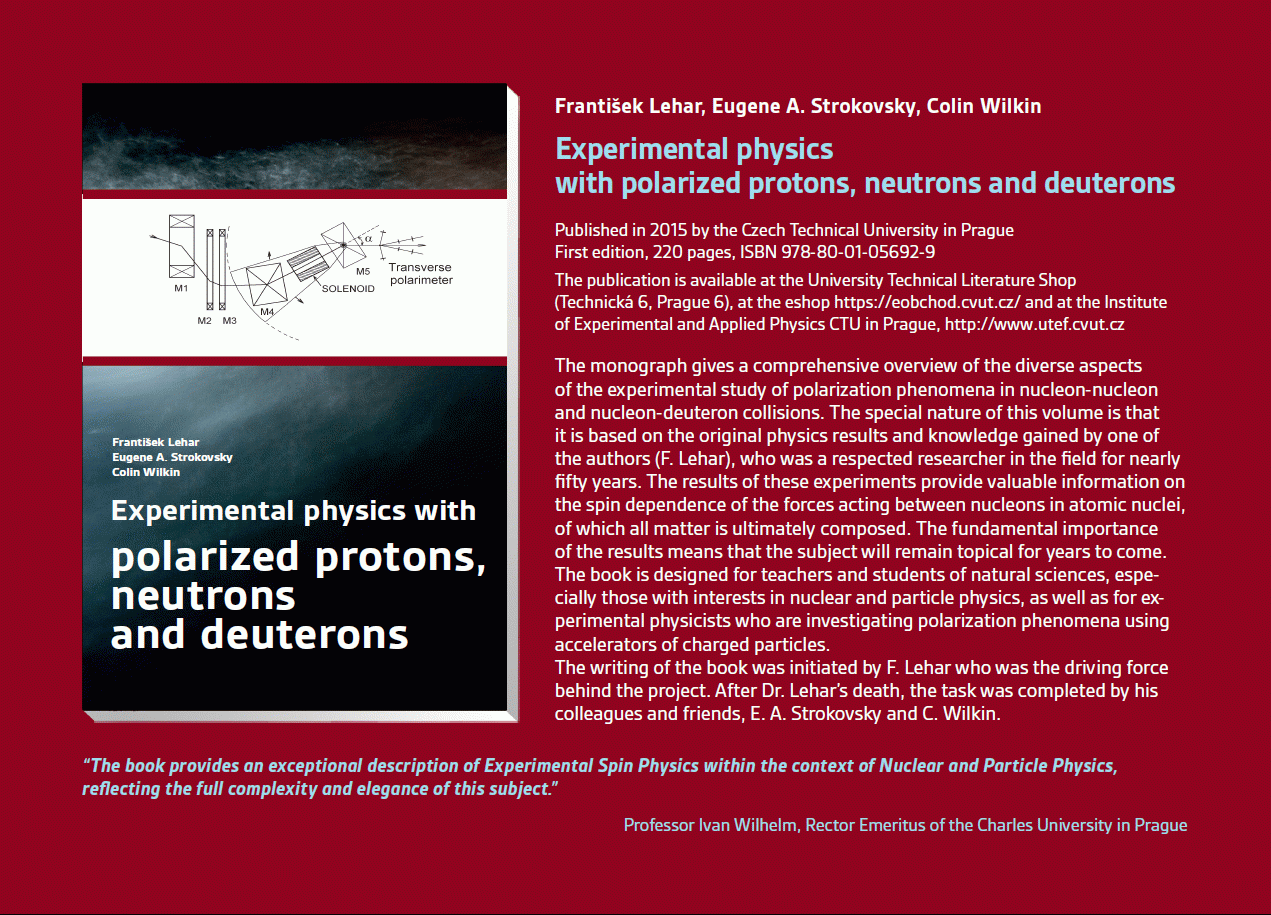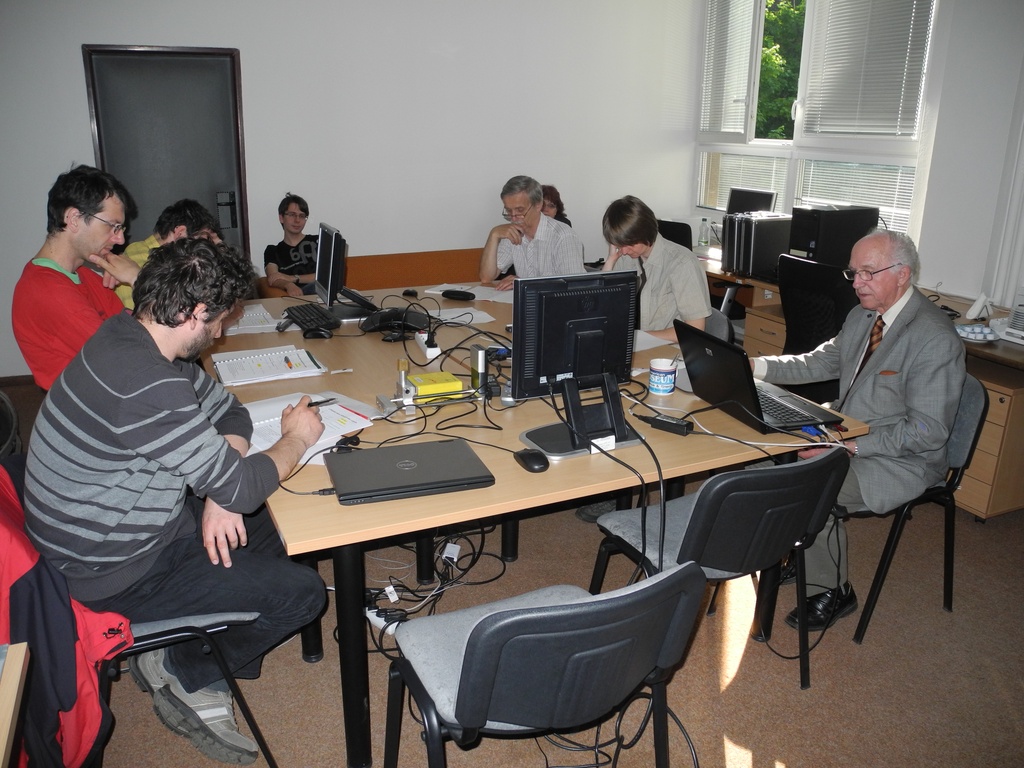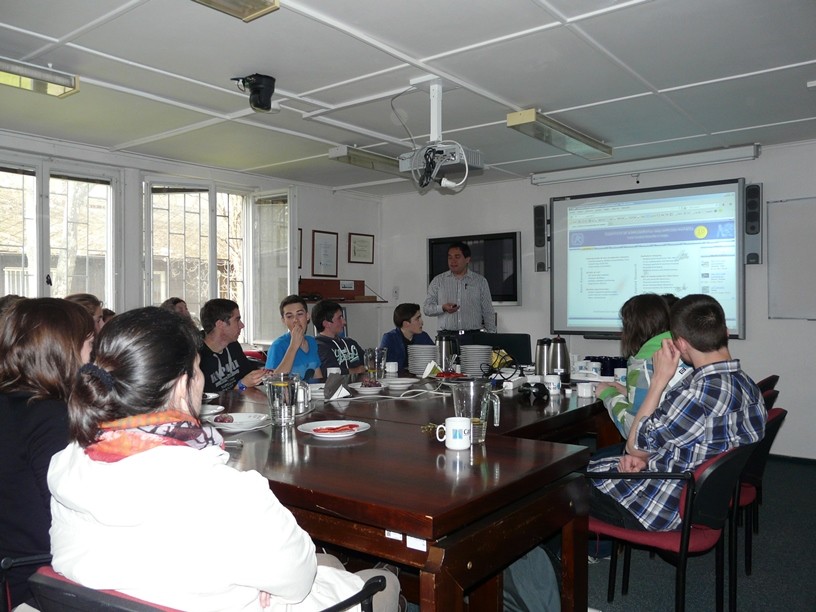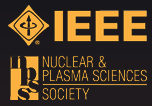Partial tasks
> ATLAS SCT detection modules
ATLAS SCT detection modules

The "ATLAS SCT detection modules" are the Silicon Strip detector modules developed for the Semiconductor Central Tracker
(SCT)
of the
ATLAS Inner Detector
(ID). The objectives of this project are (i) to perform mandatory tests with the ATLAS SCT detection modules, (ii) to prepare detection tests for these modules, (iii) to explore possibilities of module utilization in different other experiments.
The ATLAS experiment covers a general-purpose research program oriented on the exploration of proton-proton collisions exploiting the full discovery potential of the Large Hadron Collider (LHC). It has been designed (i) to verify the standard model including the discovery of the Higgs boson and other new gauge bosons linked to the other type of spontaneous symmetry breaking, (ii) to study of physics beyond the standard model (e.g. exploration of super-symetric particles and leptoquarks). The ATLAS detector is an assembly of many detector systems surrounding the interaction point. The interaction point is the place where the beams are head-on colliding. These beams are unpolarized and they determine an axis of cylindrical symmetry. The assembled ATLAS detector may be divided into three three layers. The layer nearest the interaction point is called the Inner Detector (ID)
The ID serves for the reconstruction of particle tracks and their vertex (point where these particles are created). The reconstructed tracks give information about types of the particles, whereas, the vertexes serve for studies of short-living particles. The ID consists of two independent components: the Semiconductor Central Tracker (SCT) and the Transition Radiation Tracker (TRT). The SCT has in turn two independent parts: a vertex detector built from silicon pixel detector module and a tracker detector made of silicon strip detector module.
Each silicon strip detector module consists of two (short module) or four (long module; see figure on right side) silicon sensors which have a trapezoid form and are placed on both sides of the module. In the case of the short module, one sensor is placed on its front side and a second one on its back side. In the case of the long module, two sensors are connected by bonds in a pair and are placed on the front side of the module. The other sensors are on the back side. Each bond of long module connects two strips into one of double length.
The sensors on the front side of each module are turned 40 mrad (cca 2.3 deg.) with respect to the sensors on the back side of the same module. This turning permits position sensitive measurements in two directions. One direction is perpendicular to the strips, the second one is parallel to the strips. The front side of each module is equipped with 768 elementary sensors (strips), therefore, each module has 1536 strips. In total, the SCT forward region will be monitored by more than 1.5 million strips. The modules will cover a total area of 62.1 m2.
The ATLAS experiment covers a general-purpose research program oriented on the exploration of proton-proton collisions exploiting the full discovery potential of the Large Hadron Collider (LHC). It has been designed (i) to verify the standard model including the discovery of the Higgs boson and other new gauge bosons linked to the other type of spontaneous symmetry breaking, (ii) to study of physics beyond the standard model (e.g. exploration of super-symetric particles and leptoquarks). The ATLAS detector is an assembly of many detector systems surrounding the interaction point. The interaction point is the place where the beams are head-on colliding. These beams are unpolarized and they determine an axis of cylindrical symmetry. The assembled ATLAS detector may be divided into three three layers. The layer nearest the interaction point is called the Inner Detector (ID)
The ID serves for the reconstruction of particle tracks and their vertex (point where these particles are created). The reconstructed tracks give information about types of the particles, whereas, the vertexes serve for studies of short-living particles. The ID consists of two independent components: the Semiconductor Central Tracker (SCT) and the Transition Radiation Tracker (TRT). The SCT has in turn two independent parts: a vertex detector built from silicon pixel detector module and a tracker detector made of silicon strip detector module.
Each silicon strip detector module consists of two (short module) or four (long module; see figure on right side) silicon sensors which have a trapezoid form and are placed on both sides of the module. In the case of the short module, one sensor is placed on its front side and a second one on its back side. In the case of the long module, two sensors are connected by bonds in a pair and are placed on the front side of the module. The other sensors are on the back side. Each bond of long module connects two strips into one of double length.
The sensors on the front side of each module are turned 40 mrad (cca 2.3 deg.) with respect to the sensors on the back side of the same module. This turning permits position sensitive measurements in two directions. One direction is perpendicular to the strips, the second one is parallel to the strips. The front side of each module is equipped with 768 elementary sensors (strips), therefore, each module has 1536 strips. In total, the SCT forward region will be monitored by more than 1.5 million strips. The modules will cover a total area of 62.1 m2.
Responsible person
| Solar Michael | Faculty of Mechanical Engineering |
Co-workers
| Linhart Vladimir | IEAP |
| Kohout Zdeněk | IEAP |
| Král Vlastimil | IEAP |
| Mašek Petr | IEAP |
| Pospíšil Stanislav | IEAP |
| Slavíček Tomaš | IEAP |
| Horažďovský Tomáš | IEAP |
Articles in Impacted Journals
(9)
(9)
Text format
Search
Recent events
Seattle, USA
8-15 Nov 2014
Surrey, United Kingdom
Sep. 8, 2014
April 24, 2014
3 Apr 2014
Seoul, Korea
27 Oct - 2 Nov 2013
Paris
23-27 June 2013
29 Oct - 3 Nov 2012







 Year
Year Experimental physics
with polarized protons, neutrons and deuterons
Experimental physics
with polarized protons, neutrons and deuterons Progressive detection methods in atomic and particle physics education at middle and high school level
Progressive detection methods in atomic and particle physics education at middle and high school level NSS MIC IEEE Conference
NSS MIC IEEE Conference SEPnet, CERN@school Conference
SEPnet, CERN@school Conference Lovci záhad - natáčení ČT ve spolupráci s ÚTEF
Lovci záhad - natáčení ČT ve spolupráci s ÚTEF Advanced detection methods in atomic and subatomic physics education.
Advanced detection methods in atomic and subatomic physics education. Listening to the universe by detection cosmic rays - visit of French and Czech students
Listening to the universe by detection cosmic rays - visit of French and Czech students NSS MIC IEEE Conference
NSS MIC IEEE Conference 15thIWORID
15thIWORID NSS MIC IEEE Conference
NSS MIC IEEE Conference